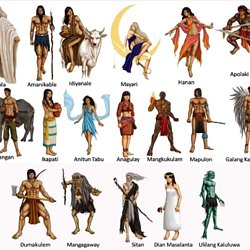
Who are indigenous healers?
- The word ‘Indigenous’ has been usually defined as natives of the specific region.
- Indigenous healing is usually considered as the traditional way of combating the illness which usually do not have scientific explanations.
- Indigenous healing has been practiced since time immemorial .These knowledge has been passed to generations to generations and are still practiced in present days.
- Indigenous healing often taken as the traditional healing is practiced in different parts of the world. They are culture specific. Indigenous healing is the sum of the people’s knowledge, their beliefs, their connection and understanding with nature and spiritualism to solve the problems related to health and heal them.
- All the small household tips like curing the cold with turmeric and water to claiming to have cure many fatal, mental disorders, and even infertility; indigenous healers and such practices have got very great influence in our society.
- Mexican Curanderismo, Sangomasof Africa, North American Natives or Shamans etc., are some of the popular healers who practice indigenous healing in their specific location
- In case of Nepal, Amachi, Jhakri, Banjhakri, Gubaju, Gosai achhat, etc are the some of the popular healers.
- They too have huge influence in contemporary society.
Indigenous healers an important pillar of society and health?
- People have very deep and strong faith towards these healers.
- Indigenous healers are respected deeply they often can maintain calm and unity in the time of chaos.
- Especially in developing countries where basic health services are not accessible in every part of the country, these healers are only the option to cure diseases and prevent illness.
- They are also the first choice for seeking health in the community as they are relatively cost-effective, and people easily understand the procedure of healing.
- Traditional healing system has its foundational root and trust in the society since ages
- It may or not heal people physically, but it certainly provides mental and emotional healing.
- They are part of the society and are culturally accepted
What is Primary Health Care (PHC)?
- The concept of PHC was brought up to achieve “Health for All”
- Primary Health Care is essential health care made universally accessible to individuals and families in the community by means acceptable to them, through their full participation and at a cost that the community and country can afford. –Alma Ata declaration
- PHC aims in reducing the health gap among the people and provide the essential health services to the people by the involvement of all levels.
- It addresses the main health problem in community providing promotive, preventive, curative, and rehabilitative services.
- With the high gap in health status and high mortality rates Nepal too became the signatory of Alm Ata declaration.
- Nepal government adheres the PHC policies and follows its principles.
Elements of Primary Health Care:
- Education about prevailing health problems and method of preventing and continuing them
- Prevention and control of locally endemic disease
- Expanded Program on Immunization
- Maternal and child health care
- Essential drugs
- Nutrition programs
- Treatment of common disease and injury
- Adequate supply of safe drinking water and basic sanitation
Role of indigenous healers in PHC:
1. Indigenous healers for creating awareness:
- Indigenous healers are the primary health focal person of the societies/communities. Thus, their involvement in health programs can add more value and trusts about the program, in the eyes of the community people
- Involvement of indigenous healers in the awareness program will help the program to reach the targeted audience.
- They can play very crucial role for Behavior Change Communication (BCC) approach.
- They can conduct education program on sanitation, immunization, newborn care, maternal care, substance abuse, etc.
- Involvement of indigenous healer in the health programs will ease the process of penetrating the society.
2. Indigenous healers as the referral unit:
- Local people visit indigenous healer as they often are the first choice.
- Healers should be given proper training for identification of certain diseases. People visiting the healers with such symptoms could then be referred to the health facility by the indigenous healers. Eg: similar practice was applied for eye care treatment in Nepal
3. Indigenous healers as the link between society and health facility:
- Many marginalized people do not visit the health facilities. Also, the people with stigmatized disease too do not come upfront but rather visit indigenous healers
- Indigenous healer in such cases can act as the link between health institution and the marginalized people to overcome the disease.
4. Indigenous healers as health service providers:
- With little training and organization their services can be made more organized and hygienic. Indigenous healers can be the service seeking point for treating the local infection and injuries.
- As medical health services are not available in every corner of the nation (especially developing countries), these healers can provide basic health service to people (Something is better than nothing).
5. Others:
- Involvement of indigenous healers in health planning makes the plan more effective.
- Indigenous healers can be motivated to keep the records of the patient which can be used for future reference and tracking the patients.
References and for more information:
https://www.corwin.com/sites/default/files/upm-binaries/5195_Moodley_I_Proof__Chapter_5.pdf
https://www.nepjol.info/index.php/JPAHS/article/viewFile/13020/10510
http://www.ijrap.net/admin/php/uploads/515_pdf.pdf
https://www.ncbi.nlm.nih.gov/pmc/articles/PMC3702459/
http://www.nphss.org.np/archive_2011/68-69.pdf
http://apps.who.int/medicinedocs/en/d/Jh2941e/8.html
https://www.ncbi.nlm.nih.gov/pmc/articles/PMC5767209/
https://www.unicef.org/about/history/files/Alma_Ata_conference_1978_report.pdf
https://www.nepjol.info/index.php/HREN/article/viewFile/9630/7921